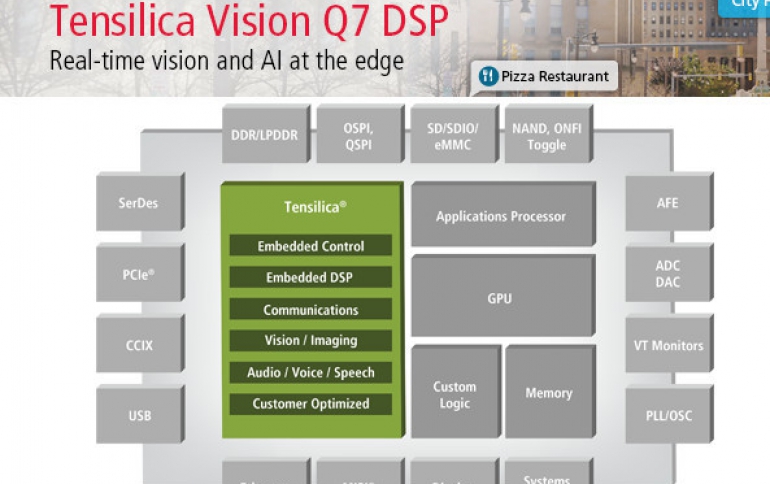
New Cadence Vision Q7 DSP Brings Real-Time Vision and AI at the Edge
Cadence Design Systems has expended its Tensilica Vision DSP product family with the introduction of the Cadence Tensilica Vision Q7 DSP, delivering up to 1.82 tera operations per second (TOPS).
To address the computational requirements for embedded vision and AI applications, the sixth-generation Vision Q7 DSP provides up to 2X greater AI and floating-point performance in the same area compared to its predecessor, the Vision Q6 DSP. The Vision Q7 DSP is optimized for simultaneous localization and mapping (SLAM), a technique commonly used in the robotics, drone, mobile and automotive markets to automatically construct or update a map of an unknown environment, and in the AR/VR market for inside-out tracking.
With its low power and architectural and instruction set enhancements, the Vision Q7 DSP is suited for demanding edge vision and AI processing requirements and boosts performance for a number of key metrics:
- Very long instruction word (VLIW) SIMD architecture delivers up to 1.7X higher TOPS compared to the Vision Q6 DSP in the same area
- An enhanced instruction set supporting 8/16/32-bit data types and optional VFPU support for single and half precision enables up to 2X faster performance on SLAM kernels compared to the Vision Q6 and Vision P6 DSPs
- Delivers up to 2X improvement in floating-point operations per mm2 (FLOPS/mm2) for both half precision (FP16) and single precision (FP32) compared to the Vision Q6 and Vision P6 DSPs
- Up to 2X greater AI performance in the same area compared to the Vision Q6 DSP results in up to 2X improvement in GMAC/mm2 compared to the Vision Q6 DSP
For AI applications, the Vision Q7 DSP provides a flexible solution delivering 512 8-bit MACs, compared to 256 MACs for the Vision Q6 DSP. For greater AI performance, the Vision Q7 DSP can be paired with the Tensilica DNA 100 processor. In addition to computational performance, the Vision Q7 DSP boasts a number of iDMA enhancements including 3D DMA, compression and a 256-bit AXI interface. The Vision Q7 DSP is a superset of the Vision Q6 DSP, which preserves customers’ existing software investment and enables an easy migration from the Vision Q6 or Vision P6 DSPs.
The Vision Q7 DSP supports AI applications developed in the Caffe, TensorFlow and TensorFlowLite frameworks through the Tensilica Xtensa Neural Network Compiler (XNNC), which maps neural networks into executable and optimized high-performance code for the Vision Q7 DSP. The Vision Q7 DSP also supports the Android Neural Network (ANN) API for on-device AI acceleration in Android-powered devices, and the software environment also features complete and optimized support for more than 1,700 OpenCV-based vision library functions. In addition, development tools and libraries are all designed to enable SoC vendors to achieve ISO 26262 automotive safety integrity level D (ASIL D) certification.
Cadence has sampled the Vision Q7 DSP to "strategic customers" and is expected to be available for general release in the second quarter of 2019.





















